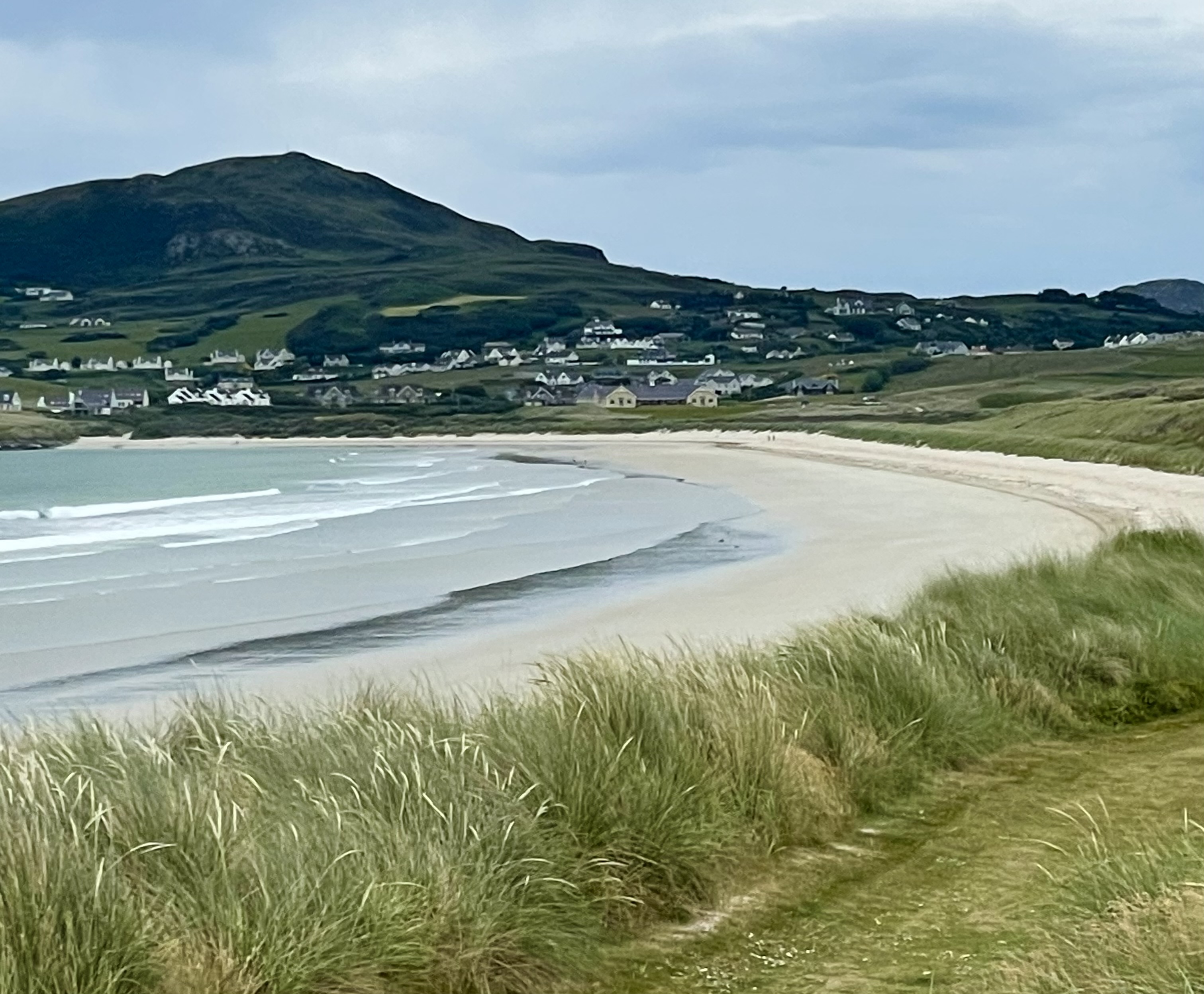Cruit Island
We left the adorable port towns of Narin and Portnoo this morning for Fahan, not too far from Derry/Londonderry. We stopped at Cruit Island Golf Club, a remote, nine-hole course on the edge of the Atlantic Ocean. As we approached Cruit Island, the road got narrower and narrower until we came to a one-lane bridge and proceeded the rest of the way on a single-lane road, not much wider than a golf-cart path.

If possible, the views from the Cruit Island course were more stunning than Narin & Portnoo.

Remembering the thick rough at Narin & Portnoo, we stocked up on one-euro golf balls in their club house. Luckily, we didn’t need all those golf balls because the rough was much kinder than the previous course.

I really loved this little golf course. The rocky cliffs, steep hills and blind holes made it challenging, but doable. The friendly staff and golfers contributed to the fun day.
Derry/Londonderry
Our day in Derry/Londonderry was much too short. A parking enforcement officer welcomed us to the city in a wonderful way. He and his partner were writing tickets in the car park when I asked for his assistance paying with a credit card. He told me the pay station only took coins (we didn’t have enough) or an app which he said we probably didn’t have. Then he smiled and said not to worry-they would not be patrolling that car park the rest of the day. To be fair, we bought a voucher anyway using the coins we had and sure enough returned later than our voucher time to find no ticket on our window.
Our first stop was the Craft Village, a wonderful collection of shops designed to support existing and emerging artists.

Historic Derry/Londonderry
Derry/Londonderry (the second largest city in Northern Ireland) is known as both Derry and Londonderry. The London prefix was added by King James I in the 17th century. In 1984 the Nationalist controlled council returned to calling the city Derry. Today, both names are used, depending on political perspective. One Irishman advised me that the best approach, and one used by many, is to call the town Derry/Londonderry.
Based on recommendations from the wait staff at Cruit Island, I thought walking the historic walls around the city would be the highlight of our day. Colonists from Britain and Scotland built the walls in the 17th century to keep out the Irish. The walls are considered to be one of the best examples of complete city walls in Ireland or Europe.
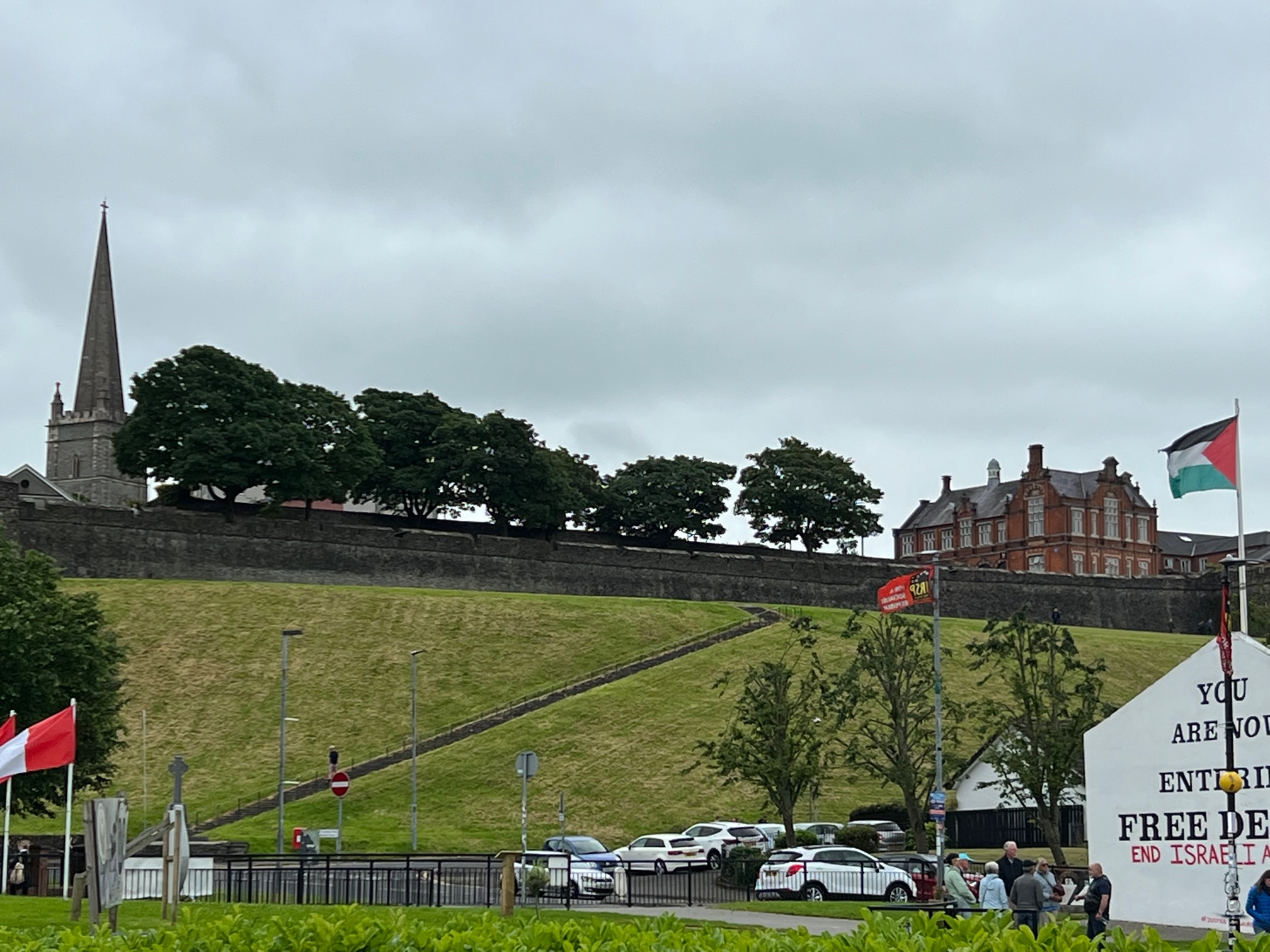
The walls were impressive, and we enjoyed seeing the city from the top of the wall.
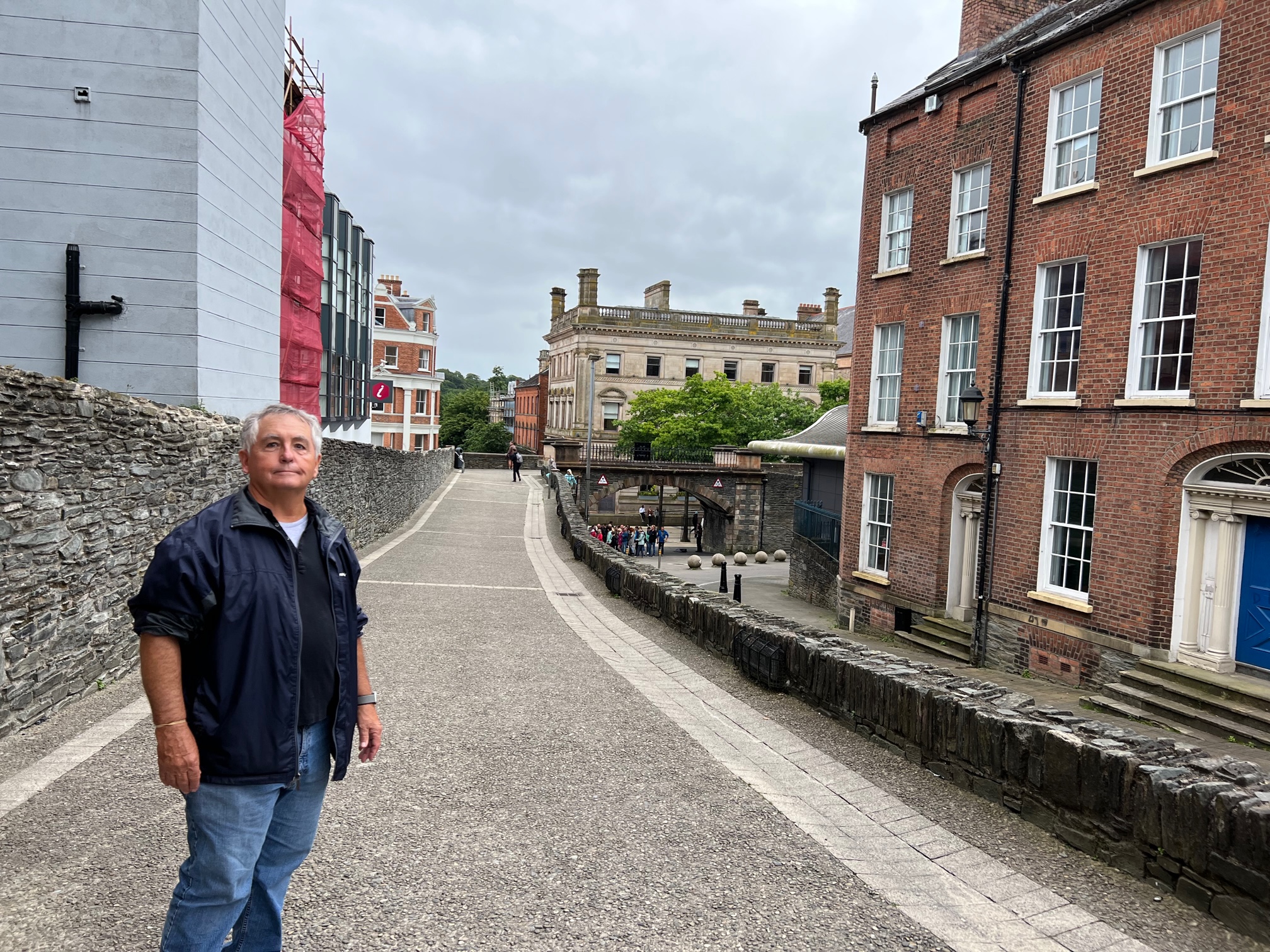
Bloody Sunday
The morning in Derry/Londonderry was interesting, but the afternoon was more than interesting-it was intense. “The Story of the Irish Conflict and Peace Process-the Derry Connection”, a private walking tour with a guide who had experienced the conflict was the highlight of our day. The tour started at Guildhall, a district government building and museum. Located in front of the building, Guildhall Square is the site of many important events in the city. Bill Clinton spoke there in 1995 at the beginning of the peace process.
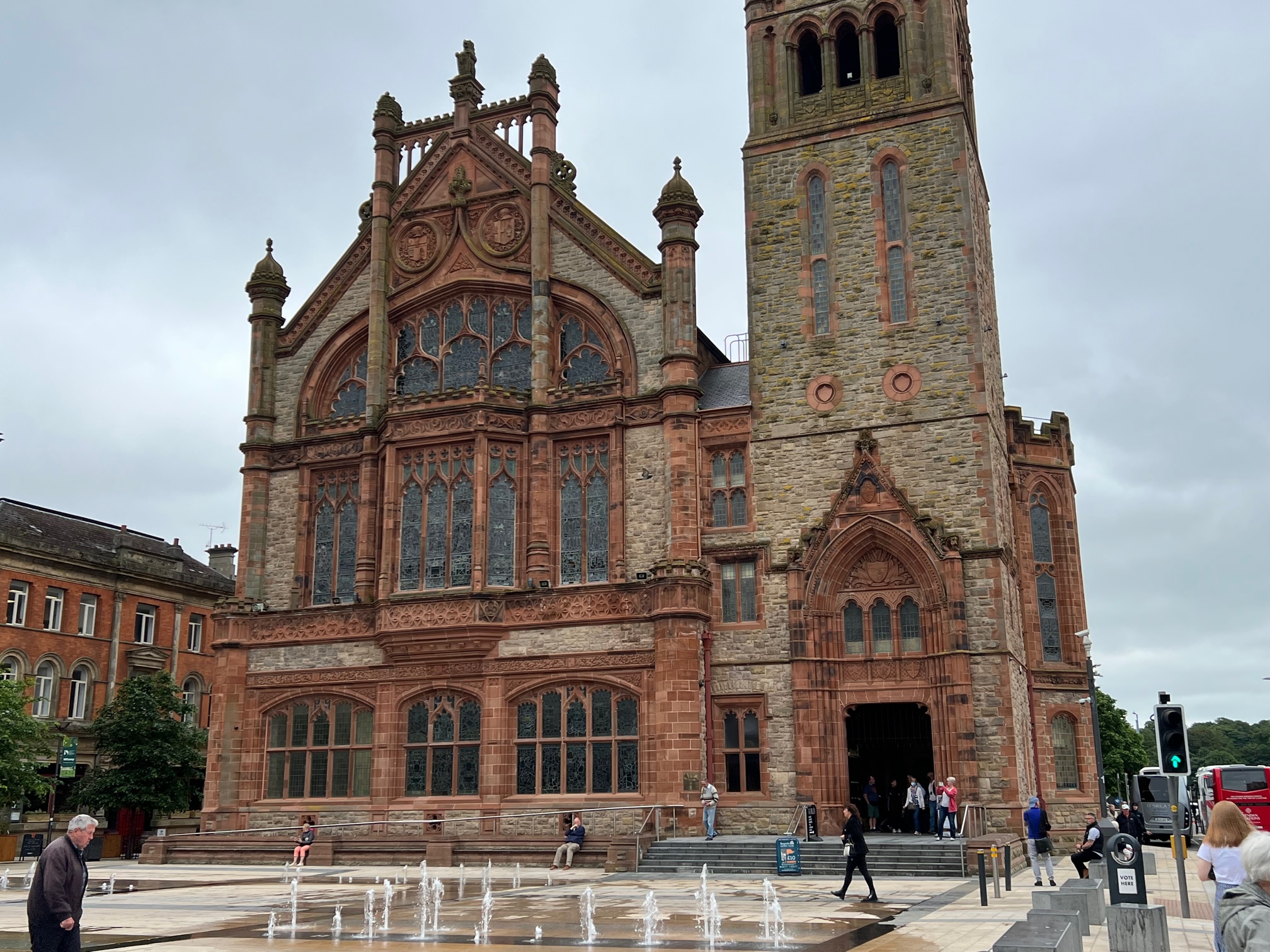
As we walked the path that the Bloody Sunday protesters took on January 30, 1972, John, our guide, told us about the events leading up to British soldiers shooting 26 unarmed civilians, killing 14. Many of the victims were shot while fleeing and some were shot while trying to help the wounded.
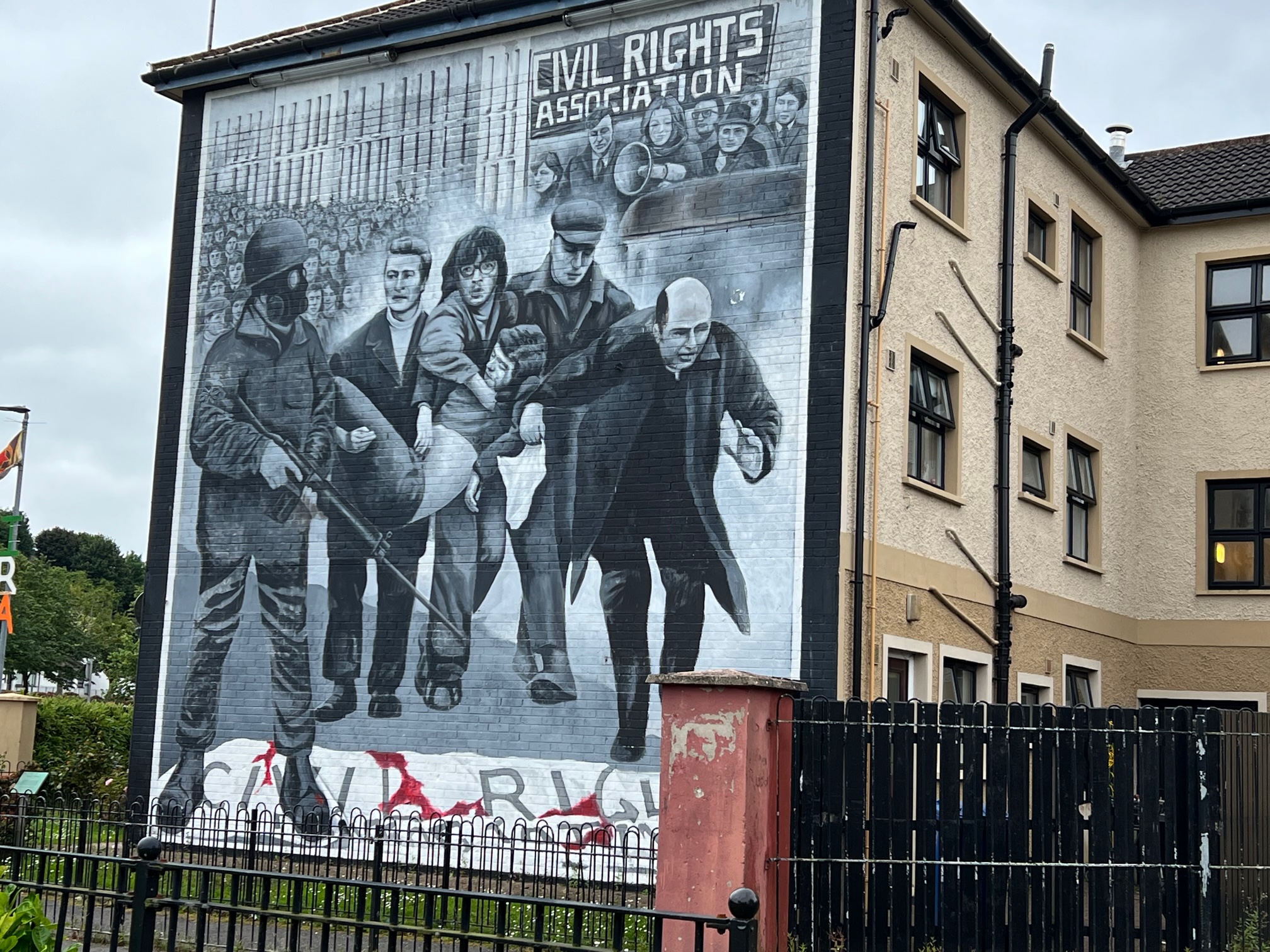
Bogside, the area just outside the walls, was the location of most of the conflict. Today there are murals commemorating the conflict and honoring the victims. One depicts some of the activists who died from hunger strikes and their mothers.
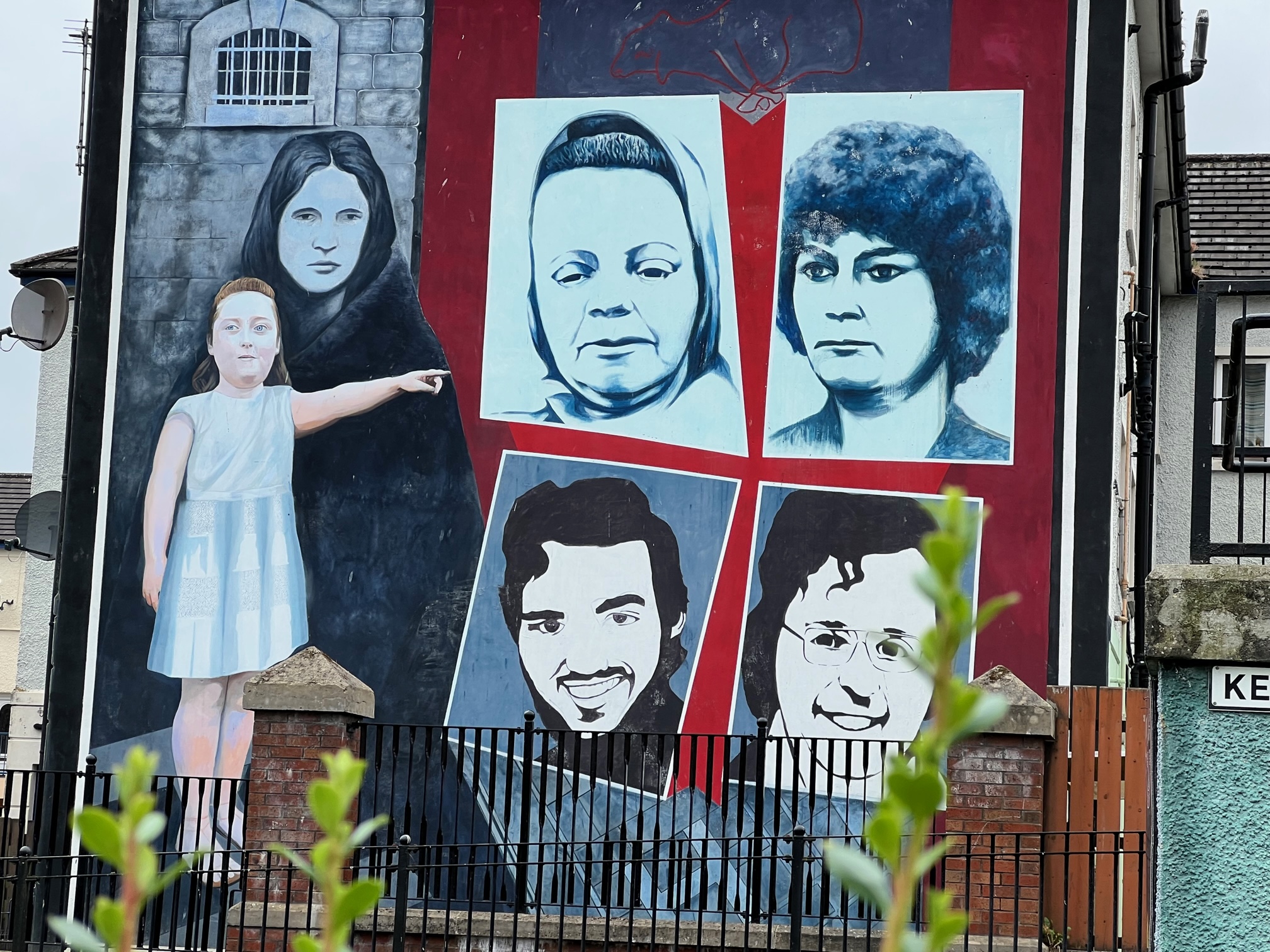
John showed us an especially moving mural and poem created for the recent fiftieth anniversary of Bloody Sunday on January 30, 2022. The waving white handkerchief in the mural was an important symbol of the protest.
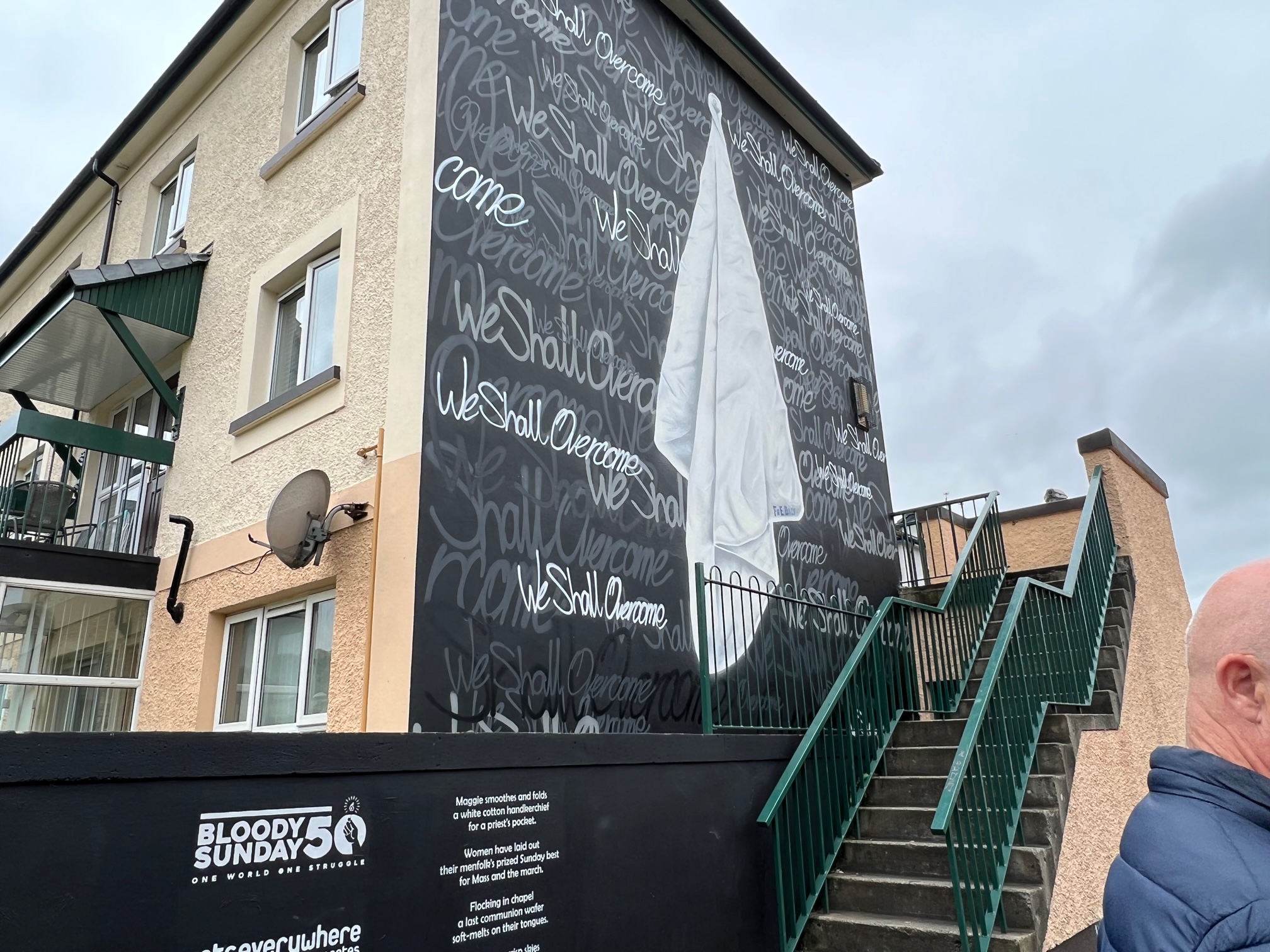
Children’s artwork was the inspiration for a powerful mural illustrating the hope for peace and belief that all people have value. The dove represents peace and the blocks represent all people.
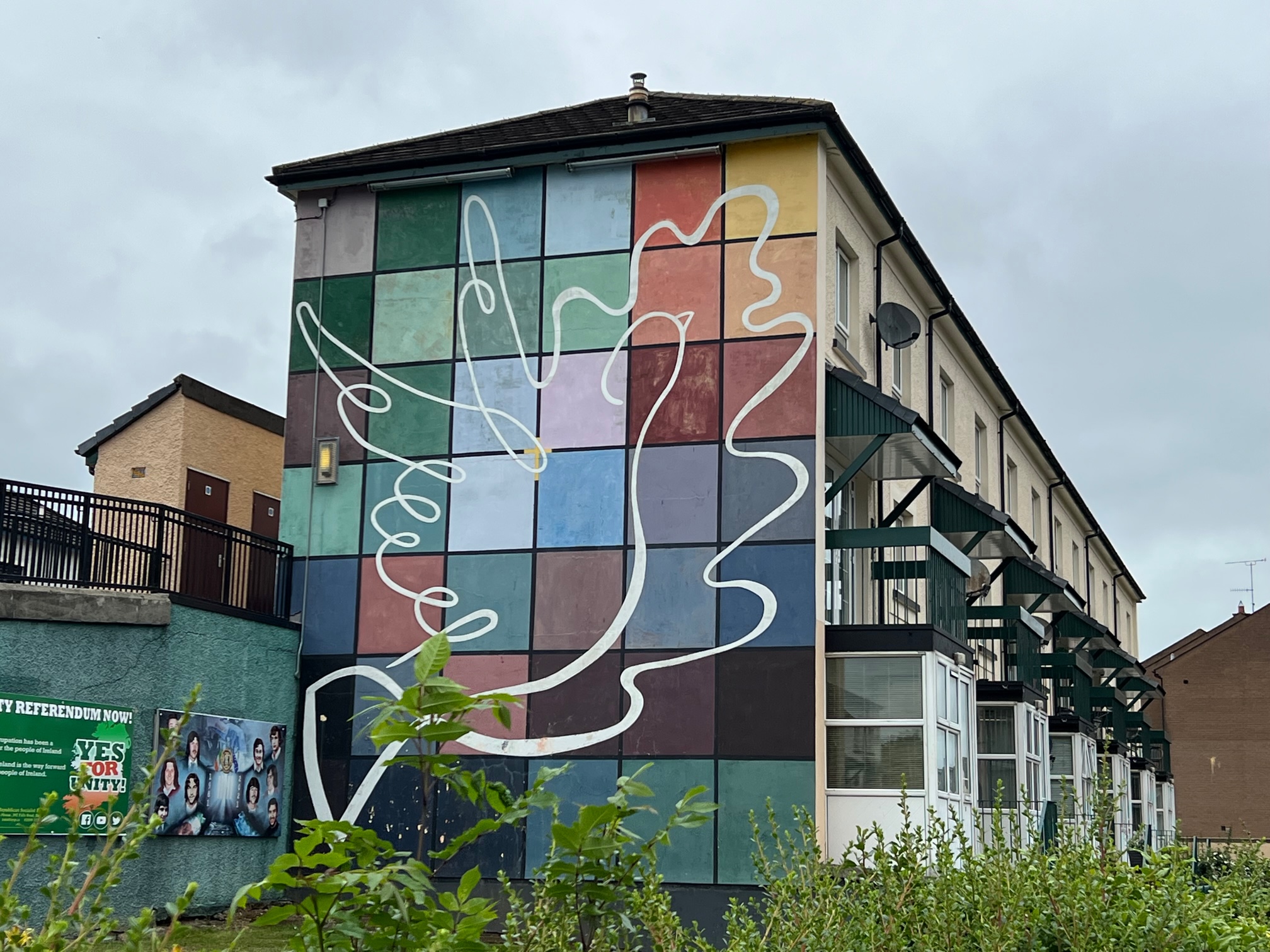
John’s passion and detailed information conveyed the emotion of the events. We left feeling quite moved by the powerful experience.
After the walking tour, crossing the Peace Bridge over the River Foyle balanced the emotions of learning about the Bloody Sunday events and repercussions. The bridge unites two historically divided communities, Protestant Waterside and Nationalist Bogside in a symbolic handshake.
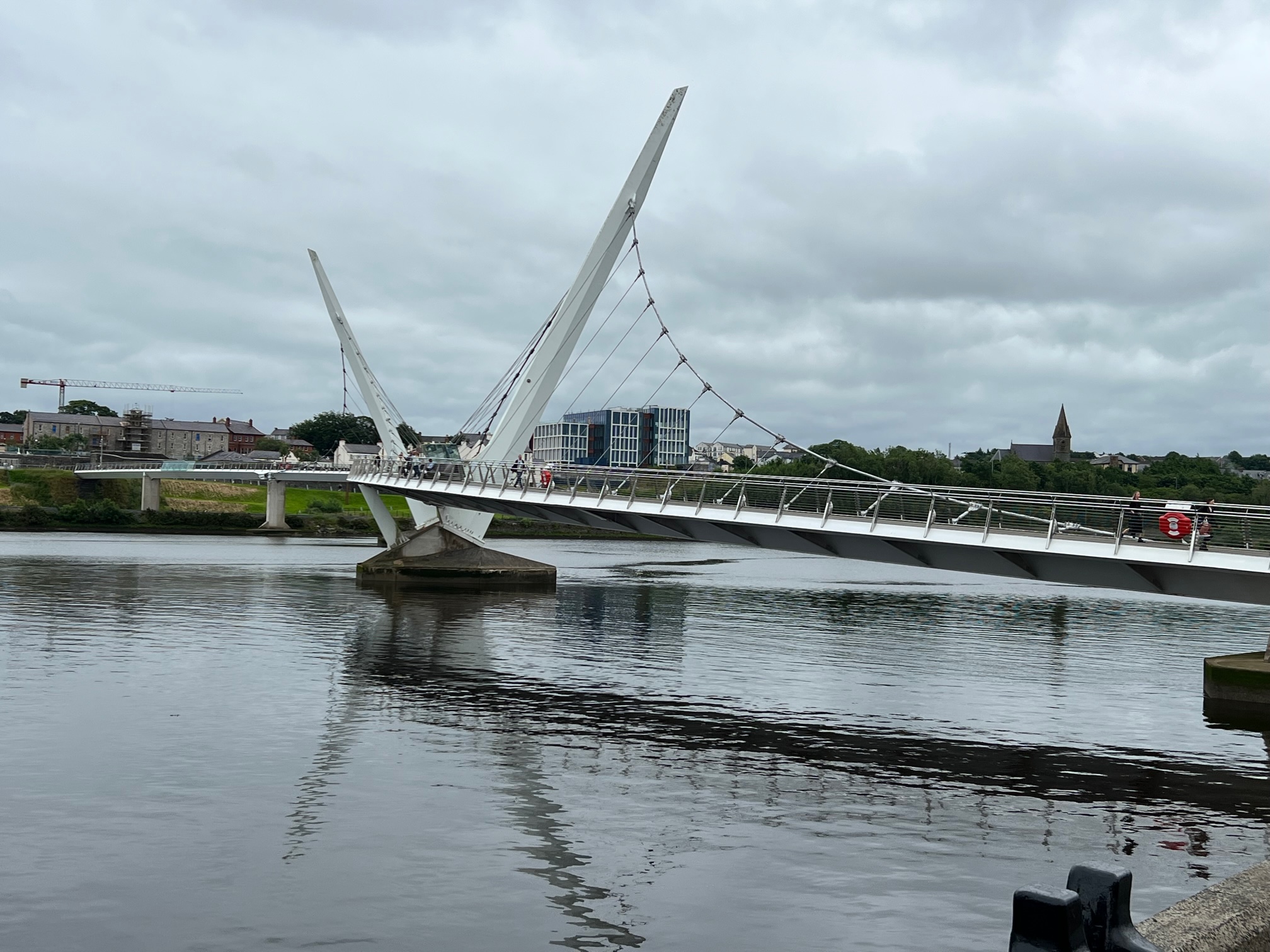
Rosapenna Golf
Another day, another beautiful round of golf. While we were having lunch in the clubhouse before our round, a lovely gentleman from Dublin stopped to chat with us and offered to take our picture.

This time we were not quite as lucky with the weather. We knew there was a chance of rain, but as we finished the front nine, it looked like we would be able to finish our round. Then on the 13th hole, the skies started to darken.

And then it got really dark.

On the 16th hole a drizzle turned into a downpour and by the time we found our way back to the car, we were soaked. Our plan was to go to the clubhouse, put on dry clothes and explore the area. But our plans changed.
A Little Wrinkle in Our Plans
Heavy rain still pounding us, I looked back at Paul and noticed the lower right leg of his pants was soaked in blood. When we got to the car, blood was spurting from his leg. We were in a very remote part of Ireland and not sure where to go for help. The golf shop advised us to go to a pharmacy in Carrigart, a little town about five minutes away.
After the pharmacist looked at Paul’s leg, he called a medic. After the medic looked at Paul’s leg, she called an ambulance. The ambulance arrived in record time, and we were transported to the emergency room in Letterkenny about thirty minutes away. Due to Covid restrictions, the medic wasn’t sure I would be able to go with Paul in the ambulance.
Thankfully they let me go with Paul because I could not drive our rental car to the hospital. I haven’t driven a stick shift since high school and have never driven on the opposite side of the road. I was willing to give it a try, but everyone thought that was a bad idea.
Everything worked out and Paul is fine now. We are so thankful for all the kind Irish people who helped us out-the pharmacist who wouldn’t let me pay for any of the supplies he used; the medic who brought me hot tea because I was shivering in my cold, wet clothes; the wonderful ambulance EMTs who took such kind care of both of us; the man in the waiting room who told us how the taxis worked (we had to get back to our car in Carrigart); the other man in the waiting room who called a taxi for us; and Tony, the taxi driver who spent an hour taking us to our car when he could have been driving people home from the pubs.
A friend taught me to ask the question, “What is the lesson in this?” The lesson in our challenges on this trip is that there is an abundance of goodness in the world.

